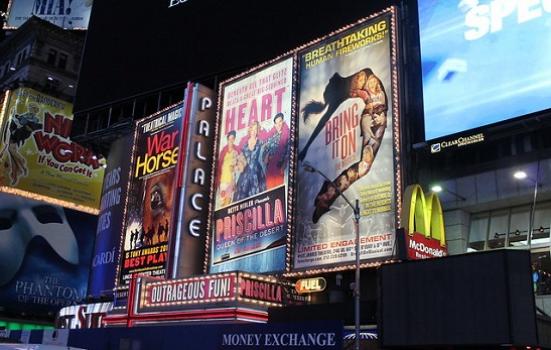A study concludes there is “considerable potential for enhancement” in how cultural districts across the world make a difference to people’s lives.

Elvert Barnes (CC BY-SA 2.0)
Cultural districts in countries across the world are falling significantly short of the social impact they have the potential to achieve, a new study has found.
The report, commissioned by the Global Cultural Districts Network, urges cultural districts to plan, deliver and evaluate their social impact more effectively. It says there is “more that cultural districts can do to clarify where their social impact priorities lie and how they relate to their programme and other activities”.
It also calls for “a more expansive view of cultural districts and the way they work to achieve social impact”. This, it says, means moving beyond the usual concepts of urban regeneration and creative placemaking to focus more on the need to nurture complex ‘ecosystems’ involving a broad mixture of stakeholders and partners.
Better evaluation
The report was written by Professor Geoffrey Crossick, Director of the UK Arts and Humanities Research Council’s four-year Cultural Value Project, which led to the creation of the Centre for Cultural Value, based at the University of Leeds.
It includes case studies of six cultural districts in different international cities: Quartier des Spectacles, Montreal; Times Square Alliance, New York; Culture Mile, London; Arts Centre Melbourne; Department of Arts, Culture and Tourism, Providence RI; Songshan Cultural and Creative Park, Taipei.
Crossick highlights a number of ways that the evaluation of social impact could be improved in these and other districts. The report recommends:
• That cultural districts should think broadly about the social impacts they wish to achieve and ensure they bring together objectives, practice and evaluation in their planning.
• The development of a toolkit of evaluation methods that can be drawn on by cultural districts to “meet their very diverse character and objectives”.
• That cultural districts should develop evaluation systems “with the breadth and focus needed”, or “develop the capacity as intelligent customers to engage others to carry it out”.
• More collaboration and sharing of information between cultural districts in order to develop approaches to evaluation and ways of working with communities and partners to deliver social programmes.
• Forming partnerships with local universities in order to work with academics and provide opportunities for postgraduate students to contribute to evaluation work.
Encouraging reflection
The report defines social impact across six areas: equity and inclusion; urban vibrancy and the public realm; neighbourhood and community; targeted social interventions; cultural social impacts; and innovation impacts.
Crossick highlights a number of specific issues for cultural districts to consider, including the importance of already established cultural activity.
“Grassroots amateur arts practice needs infrastructure that is often lost in regeneration schemes,” he says. “Nurturing such assets and infrastructure might find a place in cultural districts’ social equity agendas.”
The report also calls for consideration of the social impact of cultural experiences in themselves, rather than the more usual focus on the “specifics of place and of interventions”.
It says that cultural social impacts are “too rarely articulated”, despite the fact that “some of the most fundamental impacts of cultural engagement derive from the experience itself”.
Crossick emphasises “the ability of arts and culture to help shape reflective individuals, facilitating greater understanding of themselves and their lives, empathy with respect to others, and an appreciation of the diversity of human experience and cultures”.
Describing this as “the foundation for the relationship of arts and culture to civic agency and engagement”, he adds: “There is extensive evidence that arts and culture help produce engaged citizens, not only promoting pro-social civic behaviours such as voting and volunteering, but also fuelling a broader political imagination… cultural participation can create spaces for uncertainty and force us to reimagine our assumptions.”




